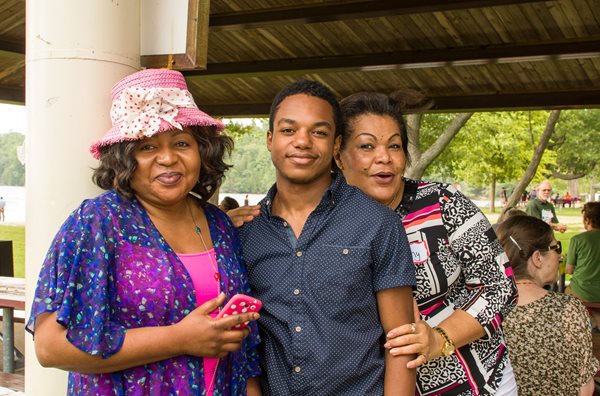
There are several popular metaphors for the ideal of a diverse, pluralistic American society, writes Virginia Gunn in The American Interest. The old “melting pot” descriptor, coined nearly a century ago, doesn’t reflect a land in which people are proud to live in America but wish to retain their own cultural identities. The “salad bowl” metaphor, too, has wilted; it’s too easy to pick out unwanted ingredients. “Quilt” perhaps most accurately captures the ideal to which we aspire—a country in which many sources of identity are stitched together to create a beautiful but varied whole.
June 20 is World Refugee Day, and a good time to remember that the United States always has been a land of immigrants, starting with the Founding Fathers. That trend has only accelerated. According to fall 2015 data from the Pew Research Center, more than 41 million immigrants lived here as of 2013 (4.7 percent of the total population), more than four times as many as in 1960. By comparison, the U.S.-born population is only about 1.6 times the size it was in 1960. Immigrants have accounted for 29 percent of U.S. population growth since 2000.
Most immigrants are now from either Latin America or South/East Asia (increasing 30-fold since 1960), instead of Europe. Immigrants from Mexico are not far behind, with about 20 times as many Mexican immigrants in 2013 as there were in 1960.
However, the fabric that results from this influx can be more of a “crazy quilt” without a lot of people working together to both help the new arrivals integrate and educate others in the community on the new cultures in their midst.
“In our community, we have a real ‘rainbow’ of cultures—from Vietnam, Bosnia, Tibet, Somalia, Sudan, Congo, Iraq, Burma, Burundi, Nepal and Bhutan,” says Michael Monte, chief operating and financial officer for Champlain Housing Trust in Burlington, Vermont. “In my view, creating a welcoming environment is essential for the work we do.”
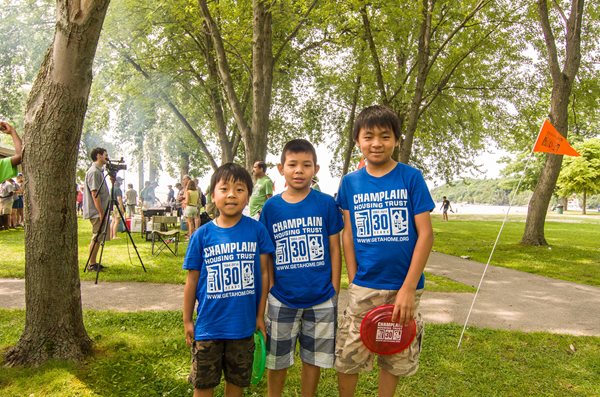
The nonprofit U.S. Committee for Refugees and Immigrants has helped bring 8,000 refugees to Vermont since 1989, and Monte estimates that 17 percent of his organization’s rental units are occupied by new Americans. His experience is shared by many other NeighborWorks organizations across the country.
Here are some examples of how nonprofits are rising to the occasion, and what they have learned.
Education is valued—and pays off
Despite the generally good preparatory education offered by the country’s nine resettlement agencies, there are always unanticipated cultural differences. Trish Feightner, housing counselor for Pathfinder Homeownership Center in Fort Wayne, Indiana, recalls how some members of the more than 6,000 Burmese residents in her area tried to use an open fire in their kitchens to prepare dinner.Pathfinder works primarily with refugees and immigrants who have been in the country for at least a year, serving as a resource when they begin to think about buying their own home. The organization offers financial education and coaching, particularly related to starting a habit of savings and building credit. It also offers related products and services, such as credit-building savings accounts and down-payment assistance.
“They are my favorite clients,” Feightner says. “They listen carefully, attend class faithfully, pay their bills on time and refer all their friends!”
The data also point to the payoff of financial education.
"Refugees are more likely to be entrepreneurial and enjoy higher rates of successful business ventures compared to natives," concludes a study conducted by Chmura Economics and Analytics. "At the local level, refugees provide increased demand for goods and services through their new purchasing power and can be particularly revitalizing in communities that otherwise have a declining population."
In Cleveland, for example, local agencies spent about $4.8 million in 2012 to help refugees get established in the area, according to the report. But the economic impact those refugees had on the community totaled about $48 million, roughly 10 times the initial resettlement costs.
Sensitize your staff
Each country of origin, and even regions within the same country, has its own customs, practices, food preferences, etc.“Their religion is often very important to these populations, and understanding what that means can serve as a bridge to building a relationship overall,” says Alex Romstedt, director of community life partners for Homeport in Columbus, Ohio. “That may mean a man cannot directly look at a woman outside of the family, or won’t shake hands. Demonstrating an understanding of and respect for their rituals and traditions will go a long way to opening doors.”
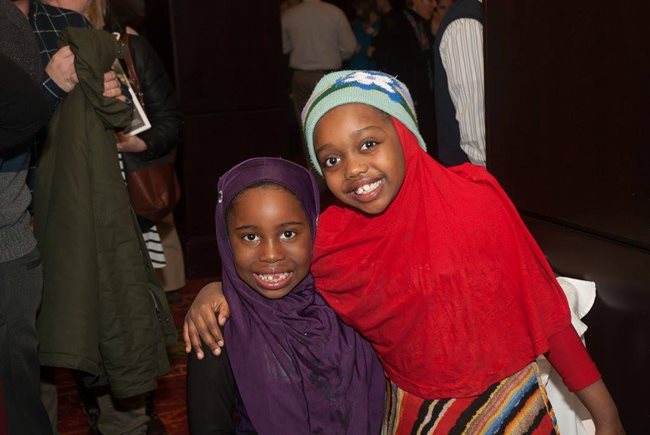
Columbus has the second-largest concentration of Somalis in the country, and Romstedt says four of Homeport’s 32 rental properties are filled nearly 100 percent by tenants of this nationality. “But you can’t generalize across all Somalis,” he notes. “For example, the residents of our Section 8 Bending Brook development identify as Bantu, speak their own language [MaayMaay] and dress more traditionally. You’ll often see them wearing sandals in the winter, walking across the property balancing parcels, etc. on their heads.”
Reflect your community
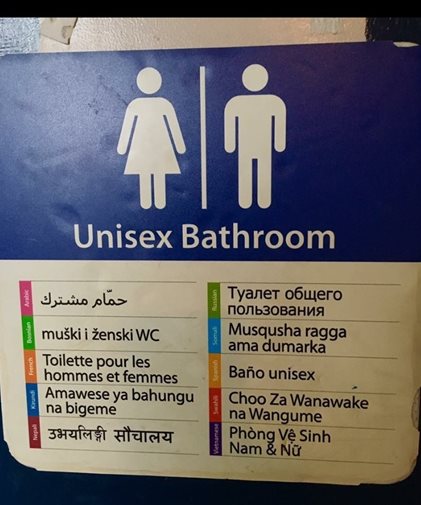 |
| Multilingual sign in a Burlington, Vermont, school |
Monte agrees, and has followed suit. Champlain Housing Trust currently has about eight new Americans on staff, speaking Bosnian, Nepali, Spanish and French—an accountant, three property managers, two maintenance workers, a homeownership administrator and a youth worker. The organization offers workshops, brochures and videos in multiple languages.
Not all languages can be spoken on staff of course, but interpreters are available from among the residents and other service agencies. In addition, Champlain Trust accesses a telephone translation service, through which an interpreter joins a conversation when needed.
Monte cautions, however, against relying on younger children to interpret for their parents, especially on complex or sensitive subjects. “Children typically speak English far better than their parents,” he says, “but it shouldn’t be a 12-year-old’s responsibility.”
Adapt your programming
Rental properties are the ideal locations for services for language-challenged families; at Homeport, they’ve ranged from ESL classes, to after-school homework help for children, to onsite parent-teacher conferences supported by translators.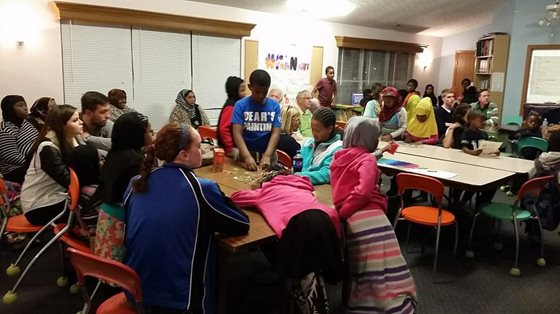 |
| Family night for new Americans sponsored by Homeport |
However, it’s also important to think about how to share the richness of diverse cultures with the rest of the community. Monte’s daughter and son went to high school with many first-generation immigrant children, and recalls moments when one of the youth would suddenly tell a story about his or her homeland that would enrapture his audience. “Those are what I call ‘aha moments,’ bringing another world to life,” he says. “We need to share them with everyone.”
One example of this is the Sankofa Initiative in Providence, Rhode Island. The centerpiece is a "world market" where the many immigrants and refugees in the area sell handmade crafts and can buy the produce and spices they miss from "back home."
Build relationships—and partnerships
To serve the many and diverse needs of a multicultural population, partnerships are necessary. Monte points to Champlain Trust’s collaboration with the Association of Africans Living in Vermont, which it soon will support by acquiring a former Catholic elementary school for a community center.Stacie Blake, director of government and community relations for the U.S. Committee for Refugees and Immigrants, recommends getting to know the closest resettlement coordinator. The UCRI resettled just over 15,000 immigrants and refugees in 2015, and relies on a network of local organizations to make its work effective for both newcomers and existing communities. Its local offices meet with stakeholders in resettlement communities annually to discuss goals and quarterly to track progress.
“The arrival of new Americans in a neighborhood can be a win-win for everyone,” notes Blake. “But it takes everyone working together.”

